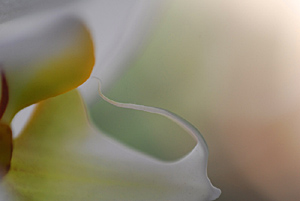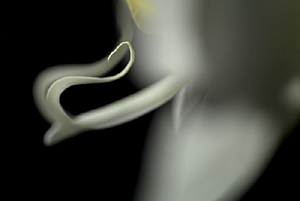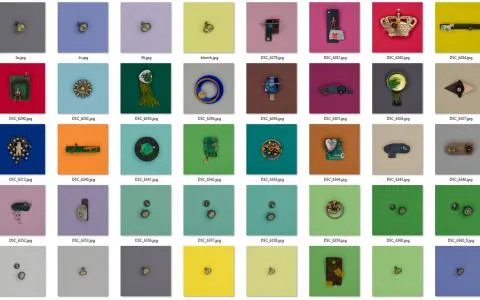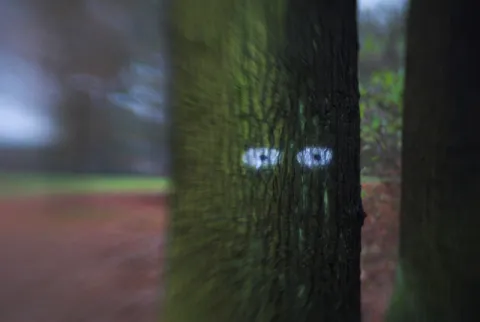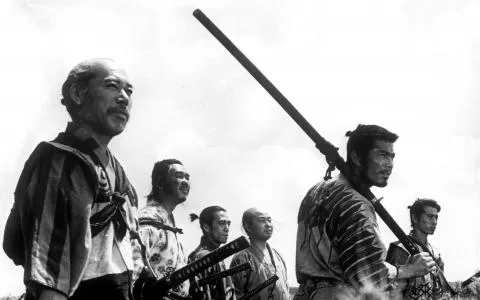Trying to make money photography is a very long shot. The market is so saturated with quality pictures at extremely low prices that getting a foothold is close to impossible.
It's a natural law of economy: when a commodity becomes very widely available the price will fall. As demand rises the availability of things will increase because the manufacturers and sellers are interested in serving the market. As a result the number of goods available to that market will increase and in order to get a cut, some sellers will lower their prices. Customers generally prefer buy at low prices and if you want to sell, you have to follow the price reductions.
When such a commodity at the same time is becoming more and more easy to produce and is produced by an exploding number of people, you have a price-reduction spiral that goes almost all the way down to free.
This has been the case all the way up through the industrial age. Think cotton fabric from the English mills underbid by Indian garments from the factories in Bombay and Calcutta again beat on price by jeans and denim from China. Each step has reduced prices and increased the global availability. Shirts don't become free - but they come very close, just barely covering the cost of materials.
And weaved cotton is nothing compared to say digitized music. Atoms compared to bits. Handling atoms is troublesome. They weigh, they fill, they degrade, and they are altogether a lot of fuss to transport from factory to customer. Much unlike handling bits in digitized music, which travels from place to place in an instant and at almost no cost, never degrades, doesn't weigh anything and fills only cheap hard disk space. It's a paradox that anybody can still manage to pry a dollar from anybody's fingers for every music track that shifts hands. I can only attribute this to the cleverness of operations like Apple and the tradition and culture of buying physical cd's and vinyl records. According to the laws of economics it ought to be free... and is in many cases already.
And yes, I know that some will argue that the musicians have to be paid, but they are certainly not going to make their money by transporting bits over the Internet. No, musicians will make money by adding value to those bits in the shape of live performances, merchandise and the occasional sale of atoms carrying their music on vinyl, CD and DVD. Most of the money earned in the chain of music distribution doesn't go to the musicians anyway - it goes to the labels, the agents, the stores and all the other parts involved. Just look at how Apple and iTunes makes its money.
My advice is to:
- Be the best
- Be nice
- Create a style
- Go niche
- Share your knowledge
- Add value
- Become a brand
- Be expensive
- Network
See more details below
Now what does this have to do with your images you may ask?
Well, think about how pictures are produced and distributed today. Never before have more pictures been recorded and never before have they been spread as widely as now. Digital cameras and the Internet have been factors that have given extreme conditions for easy and inexpensive production and distribution of pictures.
Every average Joe and Jane can take sharp, high quality images - and many do so - and put them on Picasa, flickr, SmugSmug and similar free sites faster than you can count to ten. At the same time the traditional image agencies have adopted a strategy of easy access and low prices as seen on iStockPhoto, ShutterStock, Getty Images and other large agencies. Low entry prices, no royalties and a never ending selection of pictures. Getting hold of almost free images or getting in contact with a photographer almost anywhere in the world has never been easier.
The result is that the value of pictures has plummeted and that the images that you and I produce are literally worthless when considered as a commodity. Selling images in the current market is like trying to sell sand in Sahara.
Chris Anderson - Wired Magazine Editor-in-chief and author of "The long tail" has a new book on the way, which is entitled "Free! Why $0.00 Is the Future of Business". You can read his introduction to this subject on the Wired website where he explains the freeconomy and and gives lots of examples on why many things are free today and even more will be so in the future.
So... what can you do if you want to live off your photography anyway?
You can adopt different strategies. Here are some examples. There are other ways of doing things, but I think you get my idea: since images are worthless in themselves, you have to differentiate in some way.
Be the best
Easy job: simply take better images than everybody else. Subjects, locations, technique, composition, post processing, lighting. My favorite example of this is Joe McNally. This guy simply always gets the best shot in the box. He has an extremely keen eye for subjects, always varies his style, connects with the right people and consistently delivers. And it certainly doesn't harm him that he seems to be one of the nicest guys around. His blog is both entertaining (bordering on hilarious) and educating.
Be nice
Huh, be nice? Whaddayamean?
I mean: be nice. Be curtious. Be well mannered. Be easy to work with. Treat models, assistants -- and not least clients -- nicely and make sure everybody feels comfortable when working with you. Don't yell, don't be sour, don't loose temper.
Everybody likes nice people, and prefer smooth and effortless cooperation rather than fighting and discussing their way through a shoot, an image selection or a price negotiation.
Shoot some great images on top of that and you're all set.
Create a style
If you can't become the best bar none, you may want to groom some kind of particular style, which no one else has. Become the "purple cow" that stands out--a Seth Godin term.
This is not easy since there is so little new under the sun, but still we see new styles emerge. Good examples are Dave Hill's very graphical style, David LaChapelle's weird and orchestrated setups and Loretta Lux' strange and eerie desaturated pictures. All have a significant, personal style that separates them from the masses. Add to that that they are all really good photographers, and you have a recipe for potential success.

[Nikon D200, Sigma 90mm f2.8 macro, magnifying screw-in lens]
Go niche
So you know everything about hunting, know tonnes of hunters, spend endless hours in hunting shops, read hunting magazines and go hunting all the time yourself? Well, become a hunting picture specialist! Use your skills in both photography and hunting and combine the two to become the hunting photographer par excellence.
There are lots of niches like this, and some really successful photographers have emerged from snowboarding, birding, rock climbing, cooking and what have you and now serve a highly specialized market where the competition is not nearly as fierce as in the general market.
I think of a photographer such as R.Valentine Atkinson who specializes in fly fishing photography, and has contributed to magazines, books and catalogs worldwide. Another example is David X Tejada, who specializes in annual report photos for companies, particularly in construction, mining, oil industry and other heavy industries.
Convey your knowledge
If you have a hard time selling your images that might not be the right way to go. What else can you sell? You can sell the things you know. You may have skills in teaching, talking, acting in front of a camera or microphone, and that may be an easier goal to pursue than to try to sell your pictures. Lots of skilled photographers have become writers, teachers or hosts and now make a living of that rather than selling their photos. A lot of photographers now produce instructional videos and publish them on DVD's and seem to make a good outcome from that judging from the number of offerings in the market.
My favorite example in this genre is David Hobby AKA Strobist, who has created a business by blogging about off camera flashes. His site attracts thousands of visitors and his lectures and workshops are very well attended. Enough for him to quit his day time job... as a photographer. Another very good example is Phil Askey of dpreview, who has turned his interest in cameras and camera technology into a leading camera review web site--and a seemingly very good business. He recently sold to Amazon, and is probably a wealthy man now.

[Nikon D200, Sigma 90mm f2.8 macro, magnifying screw-in lens]
Add value
You may be very good at your job as a photographer and be doing well, but may also know that it takes something extra to stay on top. So what do you do? You add something to your activities, which makes you stand out.
You can blog, document your work process, reveal your secrets, teach people to do what you do. There are tonnes of examples of people doing that, and my favorites are photographers like Chase Jarvis, a best-selling commercial photographer who has upped his ante even more by being very open about his gear choice and work processes in he form of well produced videos, a blog, behind-the-scenes pictures and lots of other activities.
Above mentioned David X Tejada has done the same with both blogging and publishing videos from his location work, as has John Harrington, a Washington DC and White House photographer, whose Assignment Construct website (no longer updated) has a bunch of videos on how he uses his gear as well as a blog where he tells a lot of small stories about his different shoots in DC.
Become a brand
Some photographers manage to create so much attention around their names that they almost become a brand. Others seem to aim very deliberately towards such a branding. The brand can be used to sell pictures like Dave Hill does with "The Dave Hill Look" and many other photography style icons have knitted their style and name closely together--Mario Testino, Annie Leibovitz, Jill Greenberg and many more. You can also leverage your name by selling equipment as it's been the case with Gary Fong and his LightSphere or people like Scott Kelby (Photoshop stuff) or David "Strobist" Hobby who endorses particular pieces or packages of gear by mentioning it in their blogs--most likely with some kind of kickback. But even without money involved they still brand themselves by touting the "Strobist Starving Student Kit" or the "Scott Kelby Location Kit".
Be expensive
I remember a cartoon with the small, ugly witch Broomhilda who is selling kisses on the market. Her sign says "1 kiss 10$", then "2$", then "1$" and then finally "1 kiss 1000$". This tactic can actually be quite smart. In stead of trying to sell hundreds or thousands of units at low prices, why not sell a few units at a ludicrous markup?
OK, you can't just raise prices for worthless run-off-the-mill products, but how about developing a luxurious and unique product, which can actually attract buyers willing to pay the premium? Yes, we are almost talking... eh, art... here, but not necessarily like Ansel Adams, Andreas Gursky or Robert Mapplethorpe, but more like nicely framed high quality prints of your best landscapes, still lifes or street shots. There are people who want original photos on their walls, and who are willing to pay more than 1$ per shot.
If you look at a site such as Epic Edits run by Brian Auer, your will see an example of this. Apart from blogging and writing lots of how-to articles, Brian has launched a fine art print site together with six other photographers, where they sell prints of their pictures.
Network
A real effective way of getting your images in circulation and getting your name mentioned is the classical networking strategy. Be where people are, mingle with the right persons, attend shows, workshops, seminars, join photowalks, participate in forums, comment, blog, socialize and be outward in every way. Scatter business cards all over the place, participate in competitions, add your images to groups, pools, galleries and what have you. Make yourself visible. It's a long term investment, but by being known in the community, you can give yourself a flying start in many situations. If your name rings a bell in the positive way, the chance of being contacted are bigger than if you are just some unknown camera owner.
The list above describes different ways of leveraging your products or your person. It may not be for everyone to pursue, but may help some. I have personally taken two of the above roads: I went niche many years ago, and almost exclusively sell images of fly fishing, but I also convey my knowledge and my opinions to support my "brand" through articles, forum posts and podcasts.
Apart from that I'm only too aware of the fact that my images are worthless drops in an ocean larger than I can ever imagine.

